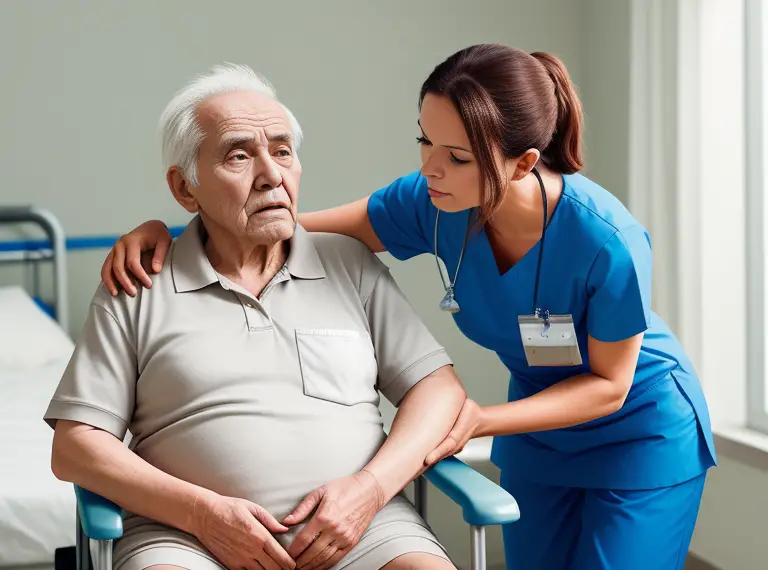Nurses and phlebotomists both have the ability to draw your blood, but there are some key differences in their roles and expertise. Let’s explore the responsibilities and qualifications of both professions to help you better understand who may be drawing your blood.
Why a Phlebotomist is Preferred for Blood Draw
Phlebotomists are specialists in blood collection and have extensive training in the field. Here are a few reasons why they are preferred for blood draw:
- Expertise: Phlebotomists have a deep understanding of the anatomy of veins and are skilled in locating and accessing them for blood collection.
- Efficiency: Their focused training allows them to quickly and accurately draw blood, minimizing discomfort and reducing the risk of complications.
- Specialized Knowledge: Phlebotomists are knowledgeable about the proper handling and labeling of blood samples, ensuring accurate test results.
Now that you have a better understanding of the role of phlebotomists, let’s delve into the nurse’s role in drawing blood.
When Does a Nurse Draw Blood?
Nurses typically draw blood in specific healthcare settings or situations, such as:
- Inpatient Units: In hospitals, nurses often draw blood from patients admitted to inpatient units for diagnostic purposes or to monitor their condition.
- Emergency Departments: Nurses in emergency departments may draw blood to quickly assess a patient’s condition and determine appropriate treatment.
- Outpatient Clinics: Nurses in outpatient clinics may draw blood for routine tests or to monitor chronic conditions.
Comparing Nurses and Phlebotomists in Blood Draw
While both nurses and phlebotomists can draw blood, there are some key differences in their roles and expertise:
- Focus: Phlebotomists specialize in blood collection and have extensive knowledge and training in this specific area. Nurses, on the other hand, have a broader scope of practice and perform various tasks in addition to blood draw.
- Training: Phlebotomists undergo specialized training in phlebotomy techniques, anatomy, and proper handling of blood samples. Nurses receive training in blood collection as part of their education, but it may not be as comprehensive as that of phlebotomists.
- Expertise: Phlebotomists have a deep understanding of veins and are skilled in locating and accessing them for blood draw. Nurses may not have the same level of expertise but are still capable of safely and accurately drawing blood.
- Contextual Understanding: Nurses have a holistic understanding of the patient’s condition and can draw blood with consideration for their overall care needs. Phlebotomists primarily focus on the blood draw process itself.
Who Should Draw Your Blood?
Determining who should draw your blood depends on various factors, including the purpose of the blood draw and the healthcare setting. In general, if you require a routine blood test or blood donation, a phlebotomist is often the most appropriate choice. Their specialized training and expertise ensure a quick and efficient blood draw with minimal discomfort.
However, in certain healthcare settings, such as hospitals or emergency departments, nurses may be responsible for drawing blood as part of their overall patient care responsibilities. In these situations, nurses are capable of safely and accurately performing the blood draw while considering the patient’s overall care needs.
Ultimately, the decision of who should draw your blood is made by healthcare professionals based on their assessment of your individual needs and the resources available in the healthcare setting.
Ensuring a Comfortable and Painless Blood Draw Experience
If you have concerns or fears about blood draws, there are steps you can take to ensure a more comfortable and painless experience:
- Communicate: Let the healthcare professional know about your concerns or fears. They can provide additional support and make accommodations if needed.
- Stay Hydrated: Drink plenty of water before the blood draw to help plump up your veins and make them easier to locate.
- Relax: Practice relaxation techniques, such as deep breathing or listening to calming music, to help you relax before and during the blood draw.
- Keep Warm: Cold temperatures can cause your veins to constrict, making blood draws more difficult. Dress warmly or ask for a warm compress to help dilate your veins.
In conclusion, both nurses and phlebotomists have the ability to draw your blood, but their roles and expertise differ. Phlebotomists are specialists in blood collection with extensive training in the field, while nurses have a broader scope of practice and perform various tasks in addition to blood draw. Regardless of who performs the blood draw, both nurses and phlebotomists are committed to providing a comfortable and painless experience.
Q: Can a nurse draw blood from a difficult vein?
A: Yes, nurses are trained to draw blood from difficult veins. While their expertise may not be as specialized as phlebotomists, they are capable of using techniques such as warm compresses, gravity-assisted positioning, and using smaller gauge needles to successfully draw blood from challenging veins.
Q: Are phlebotomists trained to handle adverse reactions during blood draw?
A: Yes, phlebotomists receive training in recognizing and handling adverse reactions during blood draw. They are knowledgeable about the signs and symptoms of reactions such as fainting or nausea and have the skills to respond quickly and appropriately to ensure patient safety.
Q: Can a nurse draw blood from a pediatric patient?
A: Yes, nurses are trained to draw blood from pediatric patients. They have the skills and knowledge to handle the unique needs and challenges of drawing blood from children, including using child-friendly techniques, distractions, and comforting measures to minimize discomfort and anxiety.
Q: What should I do if I experience pain during a blood draw?
A: If you experience pain during a blood draw, it is important to communicate with the healthcare professional performing the procedure. They can adjust their technique or take measures to make you more comfortable, such as applying a warm compress, using a smaller needle, or ensuring proper positioning.
Q: Can a phlebotomist draw blood from a patient with fragile veins?
A: Yes, phlebotomists are skilled in drawing blood from patients with fragile veins. They have the training and experience to locate and access veins gently to minimize the risk of injury or damage.
Q: Is it normal to feel lightheaded or dizzy after a blood draw?
A: It is not uncommon to feel lightheaded or dizzy after a blood draw, especially if you are prone to vasovagal responses. This is a normal reaction and usually resolves quickly. However, if you experience severe or prolonged symptoms, it is important to notify the healthcare professional immediately.
Q: Can a nurse draw blood from an arterial line?
A: Yes, nurses are trained to draw blood from arterial lines when necessary. They have the knowledge and skills to safely access and collect arterial blood samples for specific tests or monitoring purposes.
Q: What should I do if I have a fear of needles?
A: If you have a fear of needles, it is important to communicate your concerns to the healthcare professional performing the blood draw. They can offer support, reassurance, and distraction techniques to help alleviate your fear. In some cases, they may even recommend alternative methods of blood collection, such as finger sticks or numbing creams.
Q: Can a phlebotomist draw blood from an obese patient?
A: Yes, phlebotomists are trained to draw blood from patients of various body types, including obese patients. They have the expertise to locate and access veins in different areas of the body to ensure a successful blood draw.
Q: Is it normal to bruise after a blood draw?
A: It is not uncommon to experience bruising at the blood draw site. Bruising can occur due to the needle puncture or if pressure is not applied to the site after the procedure. While bruising is usually harmless and resolves on its own, if you have concerns or experience excessive bruising, it is important to notify the healthcare professional.














